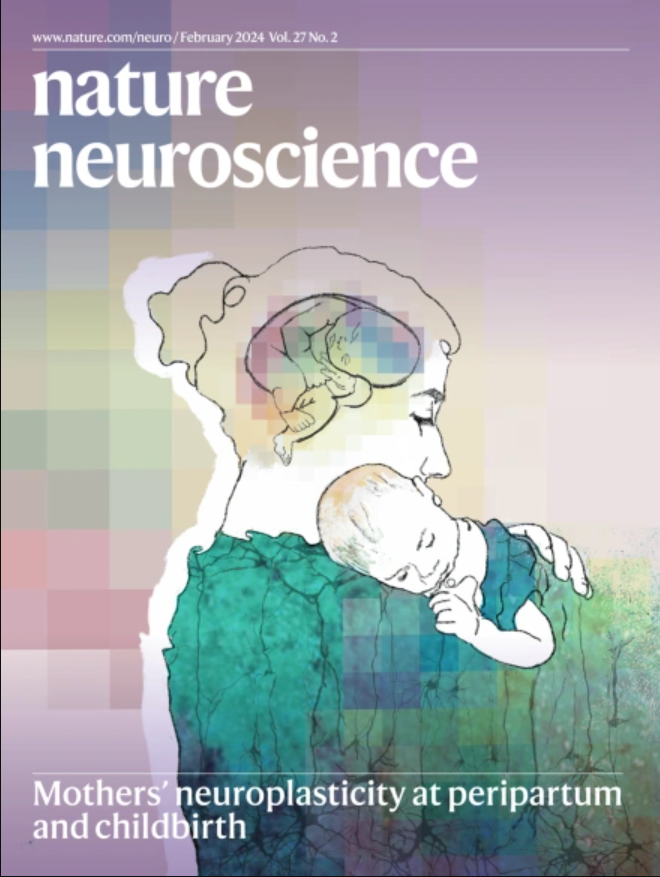Astrocytic Ca2+ prevents synaptic depotentiation by limiting repetitive activity in dendrites during motor learning.
IF 20
1区 医学
Q1 NEUROSCIENCES
引用次数: 0
Abstract
Astrocytic Ca2+ activity regulates activity-dependent synaptic plasticity, but its role in learning-related synaptic changes in the living brain remains unclear. We found that motor training induced synaptic potentiation on apical dendrites of layer 5 pyramidal neurons, as well as astrocytic Ca2+ rises in the mouse motor cortex. Reducing astrocytic Ca2+ led to synaptic depotentiation during motor training and subsequent impairment in performance improvement. Notably, synaptic depotentiation occurred on a fraction of dendrites with repetitive dendritic Ca2+ activity. On those dendrites, dendritic spines that were active before dendritic Ca2+ activity underwent CaMKII-dependent size reduction. In addition, the activation of adenosine receptors prevented repetitive dendritic Ca2+ activity and synaptic depotentiation caused by the reduction of astrocytic Ca2+, suggesting the involvement of ATP released from astrocytes and adenosine signaling in the processes. Together, these findings reveal the function of astrocytic Ca2+ in preventing synaptic depotentiation by limiting repetitive dendritic activity during learning.星形胶质细胞Ca2+通过限制运动学习期间树突的重复活动来防止突触失联。
星形胶质细胞Ca2+活性调节活动依赖性突触可塑性,但其在活脑学习相关突触变化中的作用尚不清楚。我们发现运动训练诱导第5层锥体神经元顶端树突突触增强,以及小鼠运动皮层星形细胞Ca2+升高。减少星形胶质细胞Ca2+导致运动训练期间突触失联和随后的性能改善损伤。值得注意的是,突触失联发生在部分具有重复树突Ca2+活性的树突上。在这些树突上,在树突Ca2+活性之前活跃的树突棘经历了camkii依赖性的大小减少。此外,腺苷受体的激活阻止了星形胶质细胞Ca2+减少引起的树突Ca2+的重复活动和突触失联,这表明星形胶质细胞释放的ATP和腺苷信号参与了这一过程。总之,这些发现揭示了星形细胞Ca2+通过限制学习过程中重复的树突活动来防止突触失联的功能。
本文章由计算机程序翻译,如有差异,请以英文原文为准。
求助全文
约1分钟内获得全文
求助全文
来源期刊

Nature neuroscience
医学-神经科学
CiteScore
38.60
自引率
1.20%
发文量
212
审稿时长
1 months
期刊介绍:
Nature Neuroscience, a multidisciplinary journal, publishes papers of the utmost quality and significance across all realms of neuroscience. The editors welcome contributions spanning molecular, cellular, systems, and cognitive neuroscience, along with psychophysics, computational modeling, and nervous system disorders. While no area is off-limits, studies offering fundamental insights into nervous system function receive priority.
The journal offers high visibility to both readers and authors, fostering interdisciplinary communication and accessibility to a broad audience. It maintains high standards of copy editing and production, rigorous peer review, rapid publication, and operates independently from academic societies and other vested interests.
In addition to primary research, Nature Neuroscience features news and views, reviews, editorials, commentaries, perspectives, book reviews, and correspondence, aiming to serve as the voice of the global neuroscience community.
 求助内容:
求助内容: 应助结果提醒方式:
应助结果提醒方式:


